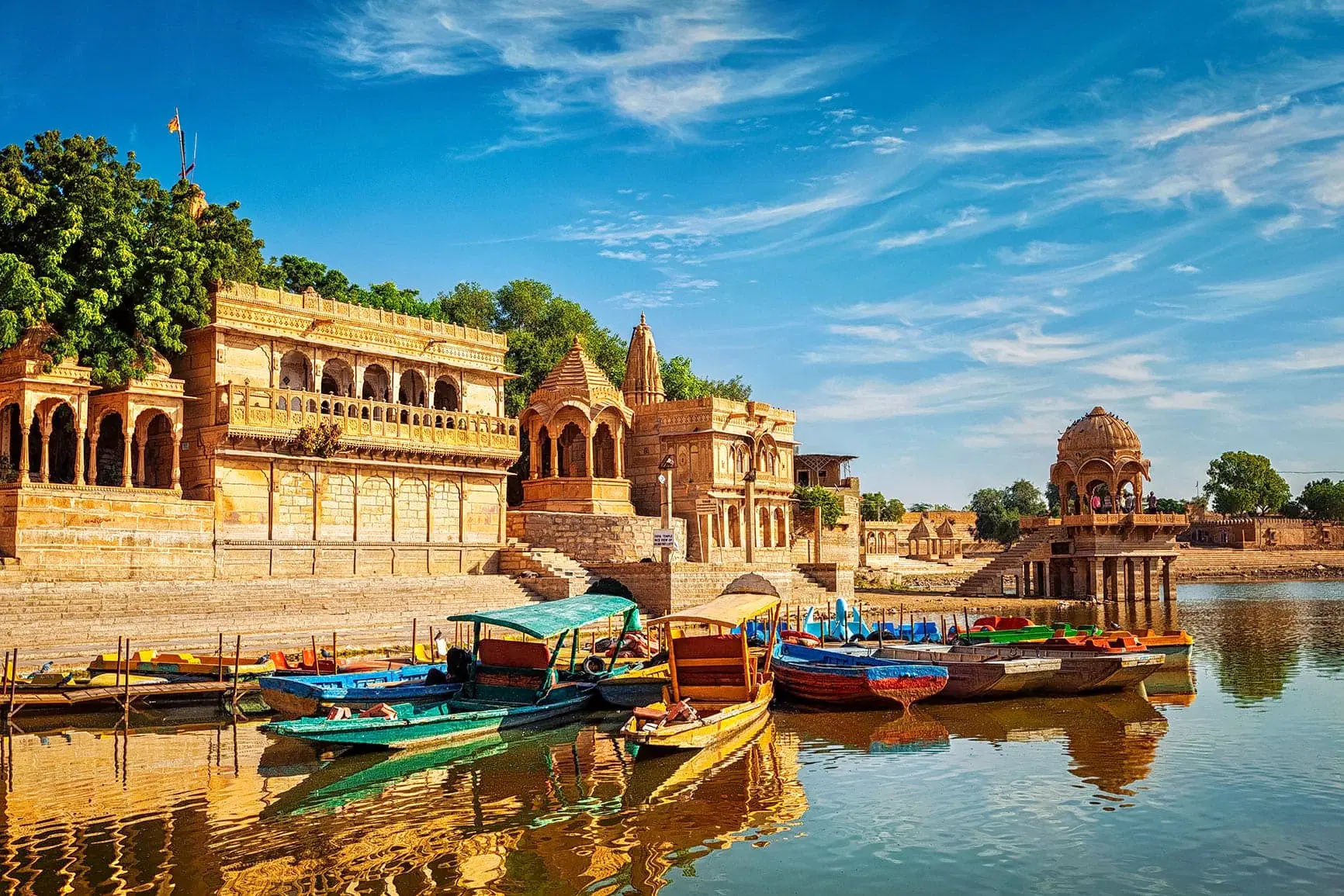Jaisalmer Fort, also known as Sonar Quila or the Golden Fort, stands as a testament to Rajasthan’s rich history, architectural splendor, and cultural heritage. Perched on Trikuta Hill amidst the golden sands of the Thar Desert, this fort is one of the largest and most iconic in India. Its unique location and historical significance make it a fascinating destination for travelers worldwide. This article explores the fort’s historical background, architectural marvels, and cultural importance in an informative and structured manner.
What is the Historical Significance of Jaisalmer Fort?
Built in 1156 AD by Rawal Jaisal, the founder of Jaisalmer, the fort holds a pivotal place in Indian history. It served as a strategic defense outpost on the ancient Silk Route, connecting India to Central Asia. This trade route brought wealth and prosperity to Jaisalmer, reflected in the fort’s grand architecture and opulence.
Over centuries, the fort witnessed numerous battles, particularly during the Mughal era and later against the Marathas. The Rajput rulers fiercely defended it, showcasing their bravery and valor. Despite these challenges, the fort remained a symbol of resilience and pride for the Rajputana dynasty.
How Does Jaisalmer Fort Reflect Rajput Architecture?
Jaisalmer Fort is a masterpiece of Rajput architecture, blending intricate artistry with robust engineering. Constructed using golden-yellow sandstone, the fort exudes a mesmerizing glow during sunrise and sunset, earning it the title of “Sonar Quila.”
Key Architectural Features:
- Massive Walls and Bastions:
The fort is fortified by 99 bastions, with its thick walls designed to withstand sieges. The circular layout of the bastions provides an expansive view of the surrounding desert, offering strategic advantages during battles. - Pols (Gates):
The fort has four grand gates – Akshya Pol, Ganesh Pol, Suraj Pol, and Hawa Pol – each adorned with carvings and inscriptions that narrate the tales of its glorious past. - Intricately Designed Palaces:
The Raj Mahal (Royal Palace) within the fort showcases elaborate carvings, mirror work, and murals. These palaces served as the royal residence and administrative centers. - Jain Temples:
A cluster of seven Jain temples, built between the 12th and 15th centuries, is a spiritual highlight within the fort. Known for their exquisite sculptures, these temples are a testament to Jain artistry and devotion. - Residential Quarters:
Unlike most forts, Jaisalmer Fort is still home to a large population. Nearly a quarter of Jaisalmer’s population resides within its walls, making it a “living fort.” The narrow lanes are lined with traditional havelis, artisan workshops, and shops selling local handicrafts.
Why Is Jaisalmer Fort a Cultural Landmark?
Jaisalmer Fort is not just an architectural marvel but also a cultural hub. Its vibrant bazaars, festivals, and folklore enrich the experience for visitors.
Cultural Highlights:
- Handicrafts and Souvenirs:
The lanes of Jaisalmer Fort are dotted with shops offering exquisite Rajasthani textiles, jewelry, and crafts. These items reflect the region’s rich artistic traditions. - Festivals:
The annual Desert Festival, held in the vicinity of the fort, showcases traditional music, dance, and camel races. This event attracts visitors from across the globe, highlighting Jaisalmer’s cultural vibrancy. - Folk Tales:
The fort is steeped in legends and folklore, from tales of valiant Rajput warriors to stories of love and sacrifice. Local guides often narrate these stories, adding a mystical charm to the experience.
What Are the Challenges Facing Jaisalmer Fort?
Despite its grandeur, Jaisalmer Fort faces several challenges. Its sandstone structure is vulnerable to weathering and requires regular maintenance. Modern infrastructure development and increased tourism have also added stress to the fort’s delicate ecosystem. Conservation efforts by local authorities and heritage organizations aim to preserve this UNESCO World Heritage Site for future generations.
Tips for Visiting Jaisalmer Fort
If you’re planning to visit Jaisalmer Fort, here are some practical tips to enhance your experience:
- Best Time to Visit:
The ideal time to visit is between October and March when the weather is pleasant. - Entry Fees:
Nominal charges apply for Indian and foreign tourists. Additional fees may be required for cameras and photography. - Guided Tours:
Opt for a guided tour to delve deeper into the fort’s history and architecture. Knowledgeable guides often bring the fort’s stories to life. - Timing:
Visit early in the morning or late afternoon to capture the fort’s golden hues during sunrise or sunset. - Nearby Attractions:
Combine your visit to the fort with a stay in a Luxury Tent in Jaisalmer or explore other attractions like Gadisar Lake and Patwon Ki Haveli.
Why Is Jaisalmer Fort a Must-Visit Destination?
Jaisalmer Fort offers a unique blend of history, architecture, and culture, making it a must-visit destination for history buffs, architecture enthusiasts, and cultural explorers. Its status as a “living fort” sets it apart from other historical sites, providing a glimpse into Rajasthan’s rich heritage and the lives of its people.
For those seeking a more immersive experience, staying at the Best Desert Camp in Jaisalmer allows you to enjoy the fort’s beauty while soaking in the serenity of the Thar Desert. This combination of historical exploration and modern comfort ensures a memorable visit.
Conclusion
Jaisalmer Fort stands as a golden beacon of India’s architectural and cultural legacy. Its intricate design, historical significance, and vibrant cultural life make it a treasure trove of experiences for travelers. By visiting this iconic landmark, you not only witness a slice of history but also contribute to preserving a heritage that has stood the test of time. Whether you’re marveling at its bastions, wandering through its lanes, or listening to the tales of its past, Jaisalmer Fort promises an unforgettable journey through history and architecture.
4o

